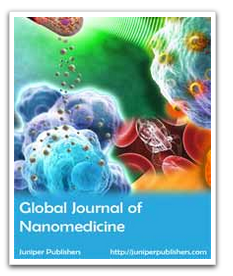Global Journal of Nanomedicine - Juniper Publishers
Relevance
During training camps and competitions, athletes are diagnosed with various diseases, injuries and pathological conditions, syndromes, symptoms (sports pathology) caused by physical overload [1]. Sports pathology impairs sports performance in athletes, forcing them to end their sports activities early. The use of existing methods of rehabilitation of pathological conditions arising in athletes [2] during their professional activities does not always give the desired result. Therefore, the development of effective methods of treatment and rehabilitation of pathological conditions that arise in athletes during training camps and competitions is relevant. There are reports in the literature on the use of IRT in the treatment of patients with various diseases [3,4]. However, these works did not study the possibility of using IRT in the treatment and prevention of sports pathology.
Purpose of the Research
To study the effect of IRT on the course of pathological conditions arising in athletes during physical overload
Material and Research Methods
Members of the Davis Cup team of Uzbekistan, tennis players of Uzbekistan and other countries, participants of the ATP and WTA tour, members of the national karate team of Uzbekistan, footballers of the «Traktor» football club (Tashkent) were under supervision. Observation period 1997-2014.
» The first group included athletes with knee tendenitis. The diagnosis was established when athletes complained of pain in the knee joint during training sessions and during matches and the absence of MRI signs of joint damage.
» The second group included athletes with a tear of the thigh muscles. The diagnosis was made on the basis of MRI signs of muscle tear.
» The third group included athletes with contusions of soft tissues of the face and limbs. The diagnosis was established in the presence of subcutaneous hemorrhages, subcutaneous hematomas.
» Group 4 included athletes with postoperative contracture of the knee joint, who had limitations in leg flexion and extension.
» Group 5 included athletes with neurotic symptoms, such as sleep disturbance, headache, depression, tearfulness, increased irritability, rapid fatigue, lack of desire to exercise, asthenia,
» The 6th group included athletes with myocardial dystrophy. They complained of pain in the region of the heart, the ECG showed signs of impaired repolarization in the myocardium.
» The 7th group included athletes with hepatic pain syndrome. They had complaints of pain in the right hypochondrium, a feeling of bitterness in the mouth, an increase in ALT, AST, ultrasound signs of stagnant gallbladder
» The 8th group included athletes with muscle pain syndrome. They complained of muscle pain in various muscle groups. They had no MRI signs of muscle damage.
» The 9th group included athletes with clinical signs of immunosuppression. These athletes had a history of frequent acute respiratory viral infections, acute respiratory infections, recurrent sinusitis, rhinitis, conjunctivitis.
» The 10th group included athletes with signs of unsatisfactory adaptation to training and competitive loads. During functional tests, pathological types of blood pressure reactions (hypertensive, hypotonic type) were recorded in them. After the termination of the physical load, the time recovery of blood pressure and heart rate to their initial values was slowed down.
IRT was used by athletes when the well-known methods of rehabilitation did not give the desired result.
Treatment Results
» Sportsmen of the 1st group stopped complaining about the occurrence of pain in the knee joint after 3-7 sessions.
» In athletes of the 2nd group, muscle healing occurred after 14-20 sessions.
» In athletes of the 3rd group, complete resorption of subcutaneous hematomas was observed after 10-15 sessions.
» Athletes of the 4th group could fully bend and extend the leg in the injured knee joint after 10-12 sessions
» Sportsmen of the 5th group, after 4-6 sessions, improved their psychological state, the headache disappeared, their mood improved, they became less irritable, they had a desire to train, and their sleep improved.
» Sportsmen of the 6th group stopped complaining of pain in the heart region after 3-5 sessions. The ECG showed a positive dynamic of indicators of the repolarization process (T wave) after 5-10 sessions of IRT.
» In athletes of the 7th group, after 8-10 sessions of IRT, there was a positive dynamics of clinical laboratory parameters, such as ALT, AST, bilirubin. Athletes stopped complaining of bitterness in the mouth after 2-3 sessions of IRT, of pain in the right hypochondrium after 3-4 sessions of IRT.
» In the athletes of the 8th group, after the 2nd-5th session of IRT, muscle pains, after intense training loads, ceased to disturb.
» In the 9th group, the recovery of athletes with ARVI, ARI was observed after 7-10 sessions of IRT.
» Long-term remission of these diseases persisted in athletes who received preventive sessions of IRT.
» In the athletes of the 10th group, after 3-5 sessions of IRT, the tolerance of training loads improved, the normotonic type of reaction to the test load was recorded, the time of blood pressure and pulse recovery to the initial values after the termination of the load improved.
Conclusion
Pulsed far infrared ranges of IRT have antimicrobial, anti-inflammatory, analgesic, decongestant, absorbable, regenerative, energy-generating action. IRT is an effective method of treatment, rehabilitation of athletes with pathological conditions arising from physical overload at training camps and competitions.
To Know more about Global Journal of Nanomedicine
Click here: https://juniperpublishers.com/index.php





No comments:
Post a Comment